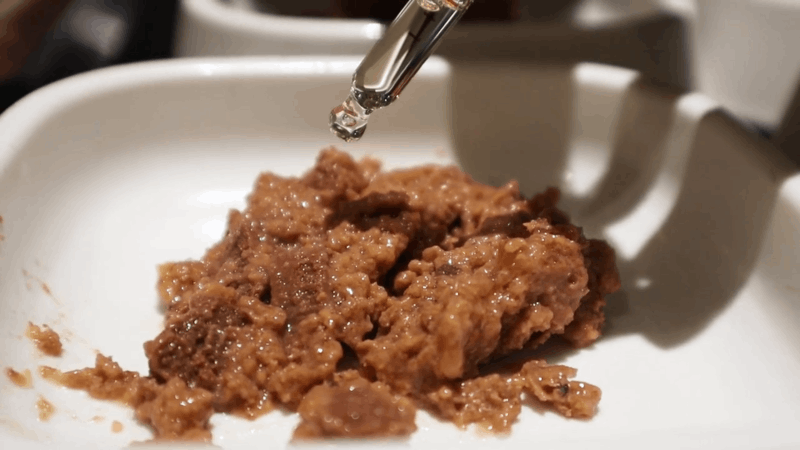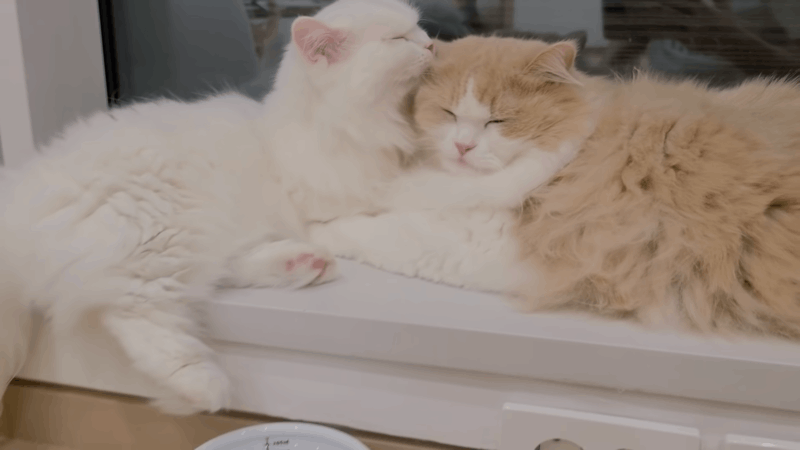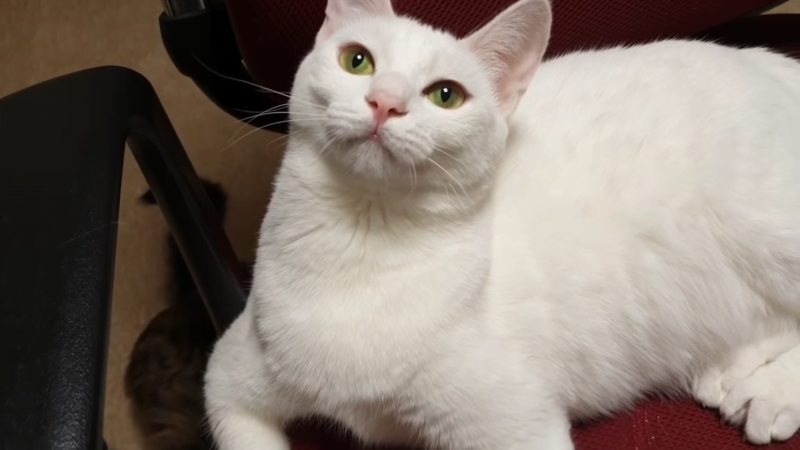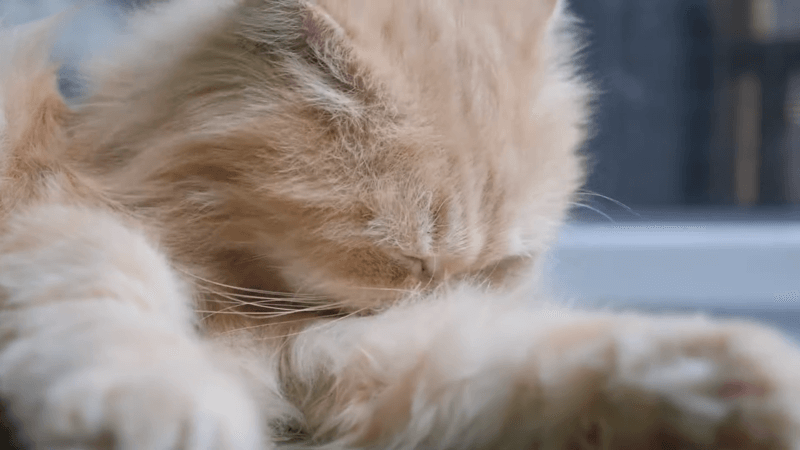No products in the cart.
Fatty liver disease in cats is a prevalent and concerning condition that affects feline health worldwide. The wellbeing of our cherished animal friends can be guaranteed by having a thorough understanding of the condition’s causes, symptoms, and management.
We’ll go into the intricacies of fatty liver disease in cats in this blog, looking at its frequency, probable causes, typical symptoms, and crucial treatment approaches. Understanding this illness will help us better safeguard the health of our animal friends.
What is Fatty Liver Disease in Cats?

Fatty liver disease, also known as hepatic lipidosis, is a common liver issue in cats characterized by the excessive accumulation of fat within the liver cells. This condition typically occurs when a cat experiences a period of reduced food intake or an inability to properly metabolize fats. Cats lack certain enzymes needed to efficiently metabolize fat, leading to the buildup of fat within liver cells.
Signs of Fatty Liver in Cats
Fatty liver disease in cats can manifest through various symptoms, including:
- Loss of appetite (Anorexia)
- Weight loss
- Lethargy
- Vomiting
- Jaundice (Yellowing of the Skin, Gums, and Eyes)
- Dehydration
- Weakness
- Hiding behavior.
- Increased thirst and urination
Recognizing these symptoms promptly is crucial, especially when considering liver issues in cats. To get proper treatment for your cats that are suffering from fatty liver disease, consulting a veterinarian is necessary. Early intervention significantly improves the prognosis for affected cats.
What Causes Fatty Liver in Cats?
The development of fatty liver disease in cats can be contributed by several factors:
- Obesity: The risk of getting fatty liver disease is higher in overweight cats.
- Anorexia: Hepatic lipidosis can result from sustained fasting or reduced meal intake.
- Stress: Cats experiencing stress, such as changes in environment or routine, may stop eating, increasing their risk of fatty liver disease.
- Underlying medical conditions: Diseases like diabetes mellitus or pancreatitis can predispose cats to hepatic lipidosis.
- Rapid weight loss: Whether as a result of sickness or nutritional adjustments, cats that lose weight too quickly run a higher danger.
CBD Oil and Fatty Liver

CBD oil has gained popularity in recent years for its potential health benefits in both humans and pets. However, concerns have been raised about its effects on the liver, particularly in the context of fatty liver disease. The liver plays a crucial role in metabolizing substances, including medications and supplements like CBD. Understanding the interaction between CBD and the liver is essential for pet owners considering its use for their furry companions.
Does CBD Oil Affect the Liver?
The ongoing investigation into the effects of CBD oil on the liver has produced inconsistent findings. Hepatoprotective characteristics refer to the possibility that CBD can shield the liver from harm brought on by a variety of causes, as suggested by certain research. But some studies have revealed issues with the possible liver damage linked to CBD oil use, especially when taken in large amounts or in conjunction with specific drugs.
Is CBD Oil Bad for the Liver?
Concerning whether CBD oil damages the liver, scientists and medical professionals are still at odds. Some research suggests that CBD may benefit liver function, however, its safety is still the concern of other studies, particularly in high doses or when used long-term.
It’s critical to speak with a veterinarian before giving CBD oil to furry friends in order to assess the advantages and disadvantages. Based on the particular requirements and health state of the pet, veterinarians can offer tailored advice.
Additionally, choosing high-quality CBD products from reputable manufacturers, such as those endorsed by organizations like Pet CBD Club, can help ensure product safety and efficacy.
How Much does It Cost to Treat Fatty Liver Disease in Cats?

Treating cat fatty liver disease can vary in cost, influenced by factors like severity, treatment duration, and specific interventions. The cost of treating fatty liver diseases in cats may be affected by hospital stays, diagnostic exams, prescription drugs, and nutritional assistance and it can range from several hundred to several thousand dollars.
Pet owners should discuss treatment options and associated expenses with their veterinarian to develop a suitable plan considering their budget and their cat’s needs.
Treatment for Fatty Liver Disease in Cats
To address the underlying cause, manage symptoms, and promote liver function, treating feline fatty liver disease usually entails a multimodal strategy. In serve cases, to provide intensive care and monitoring, hospitalization may be necessary.
Treatment options may include:
- Nutritional support: Cats with fatty liver disease often have reduced appetite or may refuse to eat altogether. Nutritional support, such as feeding tubes or syringe feeding, may be necessary to provide essential calories and nutrients.
- Fluid therapy: Correcting electrolyte imbalances and dehydration may require intravenous fluid administration.
- Medications: To treat symptoms including nausea, vomiting, and hepatic encephalopathy—brain dysfunction brought on by liver disease—your veterinarian may recommend medication.
- Management of underlying conditions: If fatty liver disease is secondary to another condition such as diabetes or pancreatitis, treating the underlying condition is essential for successful management.
- Monitoring and follow-up care: To get the highest result, it is necessary to regularly monitor liver function and overall health during treatment and recovery. Your veterinarian may recommend periodic blood tests and ultrasound examinations to assess progress.
Treatment for feline fatty liver disease can be costly and may require ongoing veterinary care. However, many cats can recover and lead fulfilling lives with the right diagnosis and care.
What Food that I Can Give to Fatty Liver Disease Cats?
Cats with liver problems often have reduced appetite, so it’s essential to offer foods that are appealing and easy to digest.
Cats with fatty liver disease should be considered with these diet:
- High-quality protein: Offer high-quality, easily digestible protein sources such as cooked chicken, turkey, or fish. Avoid fatty meats and excessive amounts of protein, which can strain the liver.
- Small, frequent meals: Offer small, frequent meals throughout the day to encourage eating and prevent excessive fasting, which can exacerbate liver issues.
- Avoid fatty foods: Avoid foods high in fat, as they can further burden the liver. This includes fatty meats, dairy products, and oily treats.
- Specialized diets: Your veterinarian may recommend specialized therapeutic diets formulated for a cat with liver problems. These diets are designed to support liver function while providing essential nutrients.
- Nutritional supplements: To support cats’ liver health, omega-3 fatty acids or vitamin E are the Specific nutritional supplements that can be prescribed by the veterinarian to support liver health.
- Hydration: Preventing dehydration by providing fresh water to cats is so important as it can worsen liver function.
To develop a diet plan tailored to your cat’s individual needs and preferences, working with your veterinarian is essential. Cats with fatty liver disease can recover and enjoy a good quality of life if they get nutrition and veterinary care.
Conclusion
fatty liver disease in cats is a serious health concern that requires prompt attention and care. By recognizing the symptoms, seeking veterinary assistance, and implementing appropriate treatment strategies, we can improve the prognosis for affected felines. Remember to prioritize regular check-ups and a healthy diet to prevent the onset of this condition.
Hello, I am Hazel Bennett, an experienced copywriter specializing in the fascinating topic of CBD for dogs. With a passion for pet wellness and extensive knowledge of CBD’s potential benefits, I am here to provide you with informative and engaging content.



